In this article you will read:
Foreign Investment in the Energy Sector of Iran
“Post-sanction Strategy”
Introduction
Eventually, after 12 years of imposing sanctions against Iran by governments and international organizations, in January 14, 2016, all banking, energy, insurance etc. sanctions have been lifted. This provides countless opportunities for investors and heralds an optimistic and prosperous future for various Iranian industries.
In the other hand, After nearly 48 years, the new law on foreign investment in Iran under the name of “Foreign Investment Promotion and Protection Act” (FIPPA) was ratified by the Parliament in 2002. FIPPA replaced the Law for the “Attraction and Protection of Foreign Investment” which was in effect since 1955. FIPPA’s replacement of LAPFI has further enhanced the legal framework and operational environment for foreign investors in Iran.
In order to find a comprehensive perception about post-sanctions
circumstances, it is necessary to elaborate the rules and regulations and investment framework of Iran. This article has been drafted by a practical perspective so that the post-sanctions methods of foreign investment in Iran with emphesis to energy generation sector become understandable.
Legal and contractual requirements of investing in the power sector of Iran have been determined in accordance with “Foreign Investment Promotion and Protection Act (FIPPA)” and “General policies of the Article 44 of the Constitution of the Islamic Republic of Iran”.
In this article, a brief and practical insight into the legal and contractual mechanism of foreign investment in Iran’s energy sector and the investment licensing procedure will be presented
1. Methods of Foreign Investment in Energy Sector of Iran
According to article 3 of the Iran’s Foreign Investment Promotion and Protection Act (FIPPA), methods of investment are: (i) Foreign Direct Investment (FDI) where the activity of the private sector is permitted; (ii) foreign investment in all sectors within the framework of “Joint-venture”, “buy-back” and “build-operate- transfer (BOT)” schemes where the return of capital and profits accrued is solely
emanated from the economic performance of the project in which the investment is made, and such return of capital and profit shall not be dependent upon a guarantee by the government, state-owned companies or banks. In the energy sector, especially power plant projects, the invetmnet model is based on BOT or BOO and the contractual model is often Energy Conversion Agreement. On the other hand, one of the ways to invest in Iran Power Plant Projects in recent years is through participation with Iranian companies active in the energy generation sector.1
Another way of investing in Iran’s Power Plant Projects is to establish a Project Company in Iran with 100 ownership of foriegn company and implement the project accordingly. Foreign investors, after establishment of Project Company,
1. For example, an agreement signed in 2002 between Iran Power Resources Development Co. and MAPNA International In order to implement a BOT project for South Isfahan Power Plant. According to this memorandum of understanding, MAPNA agreed to create an independent power plant with a capacity of 600 to 700 megawatts together with its foreign partners. In this memorandum of understanding, it was agreed that the type of contract will be Energy Conversion Agreement “ECA”, and also agreed to sign the ECA within 72 hours after amendments. MAPNA also committed to nominate its foreign partner within 45 days to be confirmed by Iran Power Resources Development Co. Finally, on June 5, 2003, the ECA signed between Iran Power Resources Development Co. on one hand, and MAPNA and a German company IHAG (consortium) on the other, based on BOT model.
would be able to bid for Power Plant tendering and after going through its procedure and wining it, it can implement the project. It should also be noted that, based on recent regulations, investing in the Solar Energy projects requires obtaining FIPPA license.
In the following, not only investing in the Power Plant Project will be implied, but also investment in upstream oil and gas industry as a part of Iran’s energy industry, will be discussed.
1-1. Foreign Direct Investment (FDI)
Foreign direct investment is a kind of exterritorial investment in a business enterprise by a natural person or a legal entity based in another country with the aim of achieving long-term profit. In this type of investment, control and management of the enterprise as a whole or in part will often be in the hands of foreign investor. Based on FIPPA, foreign direct investment attained in the following ways:
- Through the use of foreign investment in a new Iranian company or by the purchase of an already-established company’s shares by the foreign investor;
- Through contractual arrangements between the parties with or without formation of company.
Needless to say, foreign direct investment in the private sector will only be allowed in accordance with the procedures prescribed by the Act. Furthermore,
it can be construed from article 3 of FIPPA and related regulations that Foreign investment in economic sectors that are monopolized by the government will only be permitted where the return of capital and its profits is solely through the economic activity of the same investment project and does not rely on any guarantee by the government or government companies or banks. In fact, this article states the criteria for foreign investment in the public and private sectors of the Iran’s economic system.
Under article 44 of The Constitution of the Islamic Republic of Iran:
“The economy of the Islamic Republic of Iran is to consist of three sectors: state, cooperative, and private, and is to be based on systematic and sound planning.
- The state sector is to include all large-scale and mother industries, foreign trade, major minerals, banking, insurance, power generation, dams, and large- scale irrigation networks, radio and television, post, telegraph and telephone services, aviation, shipping, roads, railroads and the like; all these will be publicly owned and administered by the State.
- The cooperative sector is to include cooperative companies and enterprises concerned with production and distribution, in urban and rural areas, in accordance with Islamic criteria.
- The private sector consists of those activities concerned with agriculture, animal husbandry, industry, trade, and services that supplement the economic activities of the state and cooperative sectors.
Ownership in each of these three sectors is protected by the laws of the Islamic Republic, in so far as this ownership is in conformity with the other articles of this chapter, does not go beyond the bounds of Islamic law, contributes to the economic growth and progress of the country and does not harm society. The scope of each of these sectors as well as the regulations and conditions governing their operation, will be specified by law.”
Based on section “A” of the General policies of the Article 44 of the Constitution of the Islamic Republic of Iran: “Investment in and management and ownership of those sectors that fall under Article 44 are permissible by the non-state enterprises and public institutions, and the cooperative and private sectors as described below:
(i) Large-scale industries, mother industries (including large downstream oil and gas industries) and large mines (except oil and gas).
(ii) Foreign trade activities in the framework of trade and foreign currency policies of the country.
(iii) Banking operations by non-state public enterprises and institutions, publicly-held cooperatives and joint stock companies, provided maximum shareholding of each shareholder is determined by law.
(iv) Insurance
(v) Power supply, generation and importation of electricity for domestic consumption and export.
(vi) All postal and telecommunication activities, except the main telecommunication grid, assigning of frequencies and main networks of postal exchanges, routing and management of distribution of mails and basic postal services.
(vii) Roads and railways
(viii) Aviation (air transport) and shipping (marine transport).
The optimal share of the State and non-State sectors in the economic activities covered under the preamble of Article 44 will be determined by law by taking into view the sovereignty and independence of the country, social justice and economic development and growth.”
Considering the above-mentioned General Policies of Article 44 which has been instructed by Supreme Leader of Iran, the private sector can invest, manage and own economic activities specified in this instruction. As a result, foreign direct investment is allowed in these eight grounds by foreign investors.
1-2. Contractual Schemes
Regarding paragraph (b) of article 3 of FIPPA, foreign investment is possible in all sectors within the framework of “Joint venture”, “buy-back” and “build- operate-transfer (BOT)” schemes. These schemes are briefly discussed below.
1-2-1. Joint Ventures
The term “Joint Venture” is frequently used in the field of foreign investment, as this contractual framework is employed by investors in many legal systems for investment. The joint venture model, as a favorable contract which decrease risks and costs of investing, has always been of interest to investors. However, the application of this form of contract will be subject to compliance with the requirements which are usually determined by the laws and regulations governing the contract.
Considering the laws and regulations of an investee country, the subject matter of the project and its performance requirements, sometimes it is advisable to build a joint venture in the form of a company which has a separate legal personality from its members and often called “corporative joint venture”. Some other times, partnering without establishing a company and through concluding a contract is a safer choice for investment, which is known as “contractual joint venture”. Partnership as a kind of contract form is not the purpose of investment, but it is a method by which foreign investors achieve their investment objectives as specified in their business plan.
the form of a joint venture.
In the corporative joint venture, partners establish a company known as a joint venture company (JVC) which is a kind of business companies with an
independent legal entity, then each of them possesses specific percent of its shares. In this case, partners are known as shareholders and it is the company which is responsible for implementation of the project which is the subject of the joint venture. On the other hand, in the contractual joint venture, partners who decided not to establish a company, directly implement the investment scheme based on their contract.
1-2-2. Iran’s Petroleum Contracts Buy-back Agreement
The second method of investment which is expressed in article 3 of FIPPA is “buy-back”. In recent years, buy-back contracts, as a contractual investment technique, have had a prominent role in Iran’s economy. This type of contract is mainly known for its use in the development of discovered oil and gas fields. In addition, buy-back contract is useable in other industries.
Buy-back contract is a kind of counter-trade arrangements which is also classified as a hybrid contract. It is often defined as a contract between a purchaser and vendor in which the vendor agrees to repurchase the property from the purchaser if a certain event occurs within a specified period of time. The buy-back price is usually set out in the agreement. However, the buy-back transaction has acquired a broader meaning under Iranian law. As defined by Article 2 of the Executive Rules approved by the Council of Ministers, a buy-
back transaction refers to a deal in which the supplier, wholly or partially, puts the needed goods and services for the establishment, expansion, reconstruction, improvement or continued production of manufacturing enterprises of the country.
The price of the said goods and services, after deducting the amount of down payments plus the related costs dispersed on the basis of the concluded contract, is paid to the supplier or buyer through the delivery of goods or services of the producer and/or through delivery of other industrial and mineral goods and services produced in Iran. Due to some requirements in Iran’s Constitution and Petroleum Act, buy-back contracts are usually employed in the development of oil and gas fields in Iran.
Regarding oil and gas contracts, if the exploration is also under the offered scope of services, buy-back contract will be a categorized as “Risk Service Contract” with the special payment procedure. According to this type of contract, contractor concludes a contract with the investee government and utilize cash and non-cash items of provided capital in order to develop oil and gas fields. Further, various costs such as contractors’ remuneration are defined in such contracts and secured by selling the produced oil and gas and through “Long Term Crude Oil Sales Agreement” which is an annex to the buy-back contract.
Iran Petroleum Contract (IPC)
These days, one of the most important debates in scientific and technical circles is optimizing contractual mechanism in the upstream oil and gas projects in Iran. In February 2014, a seminar was held in Tehran and some provisions of the new oil contracts which have been prepared by “Oil Contracts Revision Committee” unveiled under the title if “Iran Petroleum Contract (IPC)”. This contract has been prepared to rectify failures and gaps in different generations of buy-back contracts and is a beginning of an evolution in Iran’s petroleum contracts. On the other hand, Iran’s Parliament has played a significant role in this evolution by passing a few important laws, especially “the Duties and Powers of the Ministry of Petroleum Act” in 2012.
Iran’s new petroleum contract is not a new kind of petroleum contract alongside concession contracts, production sharing contracts, risk service contracts or joint venture. But it is a hybrid contract which contains some features of joint venture contracts (regarding the procedure of implementing petroleum projects) and some traits of production sharing contracts (regarding the cost recovery mechanism).
Based on IPC Contracts, in the exploration stage, contractor and the National Iranian Oil Company establish an “Oil Exploration Operations Company” in which contractor leads the operation and performs exploration by using his own budget and by taking its risks. National Iranian Oil Company is a technical
partner which accompanies the contractor without sharing the costs and risks of exploration. If exploration does not lead to the discovery of a commercial field, the contractor’s costs incurred in the operation will not be refunded. But if a commercial field is discovered, contractor’s costs will be transferred from the exploration stage to the development stage and will be recovered during the amortization period.
Following the discovery of commercial field and assessment operation, the project will steps into a new stage. In this phase, in order to implement a development project, another company is established which is usually known as “development operation company”.
Like the previous stage, the contractor incurs all costs and risks of development operation while he has the power to lead the operation. Once again, the National Iranian Oil Company is technical partner which accompanies the contractor without sharing the costs and risks of development operation. All direct and indirect costs of such operation which is incurred by the contractor or the National Iranian Oil Company, will be amortized by allocation of a specific percentage of products to the company.
The next phase is production operations which are more varied than exploration and development stage. Therefore, either (i) the production operations may be implemented by the National Iranian Oil Company or its affiliated companied along with financial and technical support of contractor; or (ii) the development
company also takes part in production operations; or (iii) in order to implement and manage field production operations, a production operations company is established while development company which has built in the former stage, will provide financial and technical support to the production company.
It should be noted that, based on the above-mentioned seminar’s panels, the IOR/EOR are other responsibilities of production operations company which should be implemented and reported to the development company. Finally, at the end of a payment period, which according to the conditions of each field is ranging from 15 to 20 years, the petroleum contract is terminated.
The seminar’s panels did not determine any specific forms of company for exploration and development operations, however, the production operation company will be formed as a “Non- profit Joint Operating Company”.
1-2-3. Build, Operation, Transfer Contract (BOT)
Contractual mechanisim of investmnet in the Iran’s Power Plant projects is based on BOT 2 or BOO 3 and also is in accordance with Enegergy Conversion Agreement
According to the FIPPA, another contractual framework for investment is “Build, Operation, Transfer (BOT) Contract”. This method of investment often used for
2. For example, an agreement signed in 2002 between Iran Power Resources Development Co. and MAPNA International In order to implement a BOT project for South Isfahan Power Plant. According to this memorandum of understanding, MAPNA agreed to create an independent power plant with a capacity of 600 to 700 megawatts together with its foreign partners. In this memorandum of understanding, it was agreed that the type of contract will be Energy Conversion Agreement “ECA”, and also agreed to sign the ECA within 72 hours after amendments. MAPNA also committed to nominate its foreign partner within 45 days to be confirmed by Iran Power Resources Development Co. Finally, on June 5, 2003, the ECA signed between Iran Power Resources Development Co. on one hand, and MAPNA and a German company IHAG (consortium) on the other, based on BOT model.
3. For example, in the construction of Asalouyeh Gas Power Plant which was based on “Energy Conversion Agreement ECA” and in accordance with BOO model, the Agreement signed between Ministry of Energy and Electric Company of Asalouyeh-MAPNA in July, 2006.
Purposes of contracting Parties were as follows:
“Article2.
building infrastructures such as power plants, telecommunications, airports and highways. Nevertheless, it can also be used in the recreational projects such as building cable cars. In BOT contracts, a government organization confers the concession of building and operation of a specific project to the private sector, and in return, the private sector is responsible for financing, designing, supplying materials, building, testing and managing the project. During the operation period, the private sector recovers its costs and interest of its investment by selling the project’s output. At the end of operation period, ownership of the facility is transferred to the government organization free of charge.
BOT contract is a kind of public-private partnership in which the government or a public sector decides to build an infrastructure project by partnering with the private sector. Experience has proven that it is much faster and cost-effective when governments build necessary facilities and infrastructures by partnering
The Object of this Agreement is to set out the terms and conditions on which the Company undertakes to design, engineer, finance, supply, transport to the Site, construct, install, test, commission, operate, maintain, repair and manage the Power Station on a Build-Own-Operate basis and sell the dependable Net Capacity and Delivered Energy to Tavanir and Tavanir undertakes to purchase the said dependable Net Capacity and Delivered Energy generated by the Power Station from the Company.”
with the private sector. Choosing an appropriate company from the private sector (which is usually is a consortium) is through a tendering process, after which the state or public sector sign a BOT contract with the selected company.
2. Issuance of Foreign Investment License in Energy Sector of Iran
- Application Form;
- Establishment License / Primary agreement / Preliminary agreement of the pertinent Iranian organization;
- Official letter of the foreign investor to submit to the OIETAl;
- The foreign investors background including a brief history of the company, the year of establishment area of activities in case of foreign investor is a natural person, a photocopy of passport and resume will be provided;
- A list of machinery, equipments and CKD part which may be imported into the country as a part of the foreign investors capital (if available);
- In case that part of the foreign investor’s share is in the form of technical know –how, a draft of the contract outlining the conditions of the transfer of technology;
- Any further useful information;
The primary objective in this process is to find a suitable and “acceptable” local
partner. If the contemplated foreign investment project complies with the plan already sanctioned, the Ministry of Economic Affairs and Finance may introduce to the potentially interested foreign investor, the local partners already holding an “agreement in principle” for taking part in such a project.
A ministerial “agreement in principle” must be applied for jointly by both the foreign and the local potential investors.
Details of the project are to be submitted to the Ministry of Economic Affairs and Finance as per a standard questionnaire, together with a feasibility study. Once the agreement in principle is issued, the parties should take the preliminary steps along with implementation of the project, such as importation of the machinery, equipment and setting up the required infrastructure.
An “application for participation” is required to be filed by the foreign investor with OIETAI to the effect of participation in implementation of the sanctioned project. Then, the process is followed by a review of the application by the Supervisory Board for Attraction and Protection of Foreign Investment.
The Foreign Department of Ministry of Economic Affairs and Finance, upon preliminary coordination with the Ministries concerned, shall prepare a comprehensive report for submission to the Supervisory Board to adopt the
decision. If the project is deemed to be in the country’s overall interest, the Board conveys its favored decision through MEAF for approval and issues an Investment Decree. The Decree, once issued, is the formal permission for the investor to begin operation and to import the necessary capital which will be protected under the law.
About ESK Law Firm
ESK Law Firm is one of Iranian leading law firms, with a reputation for standing out and for being outstanding. We provide legal services in areas such as international trade law; international investment law; banking and finance law; energy law; company law, litigation as well as conduct due diligence for entities, represent clients for negotiating, and designing and drafting various kinds of international contracts. Our clients include multinational corporations, businesses, entrepreneurs, financial institutions and governments who seek advice in respect to their domestic and international affairs, including cross-border transactions and inward and outward investment activities.
ESK Law Firm’s partners, with more than a decade experience in the legal services, provide professional services of substantial value to anyone who is presently managing, or considering development of local and international business operations. They offer the sharpest legal minds, the clearest advice, And an unshakable sense of what’s possible.
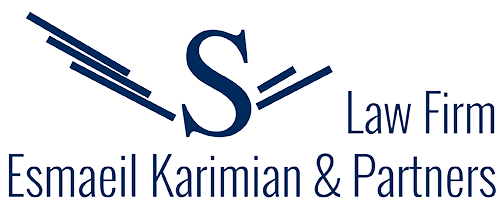
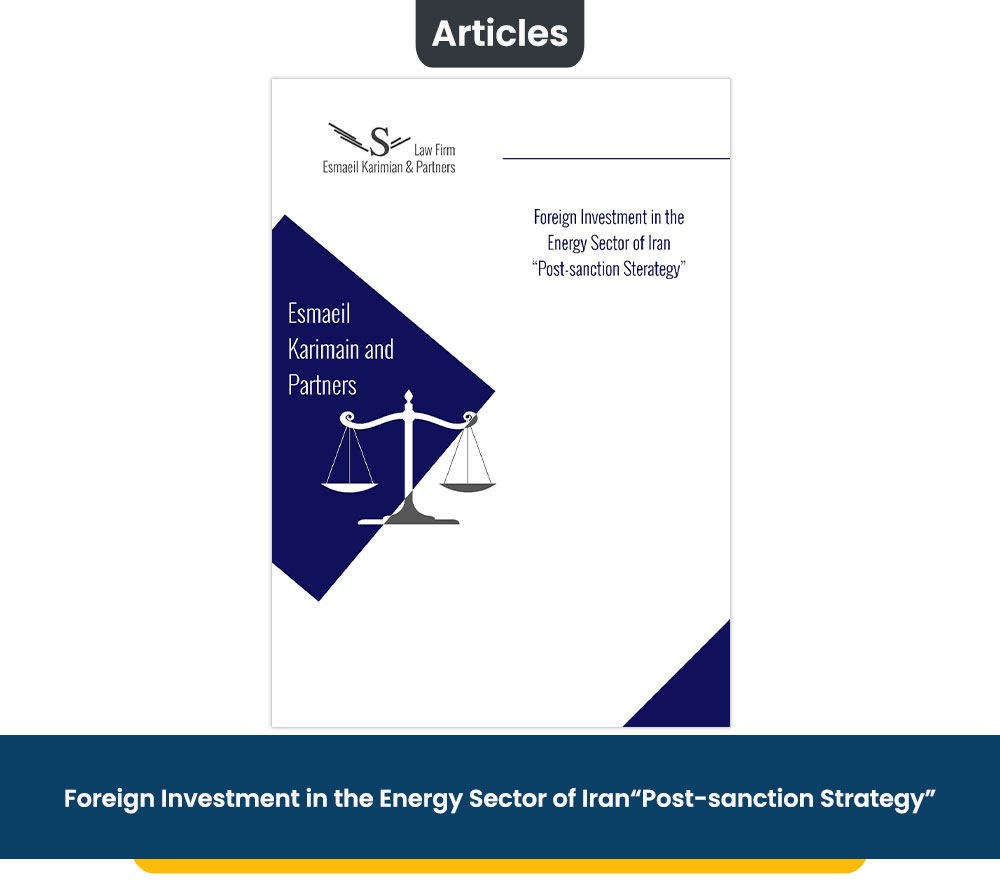
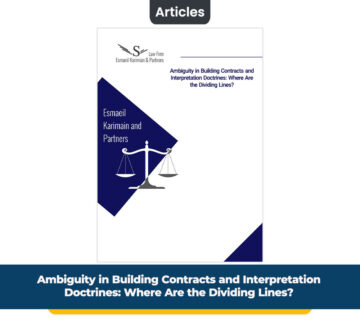
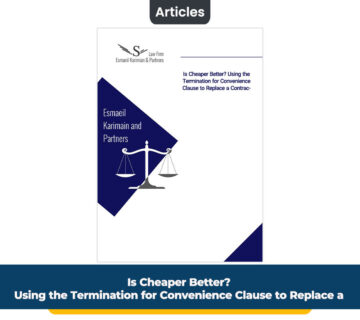
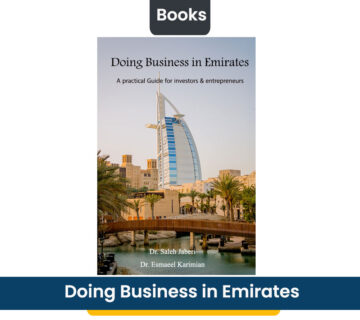
No comment